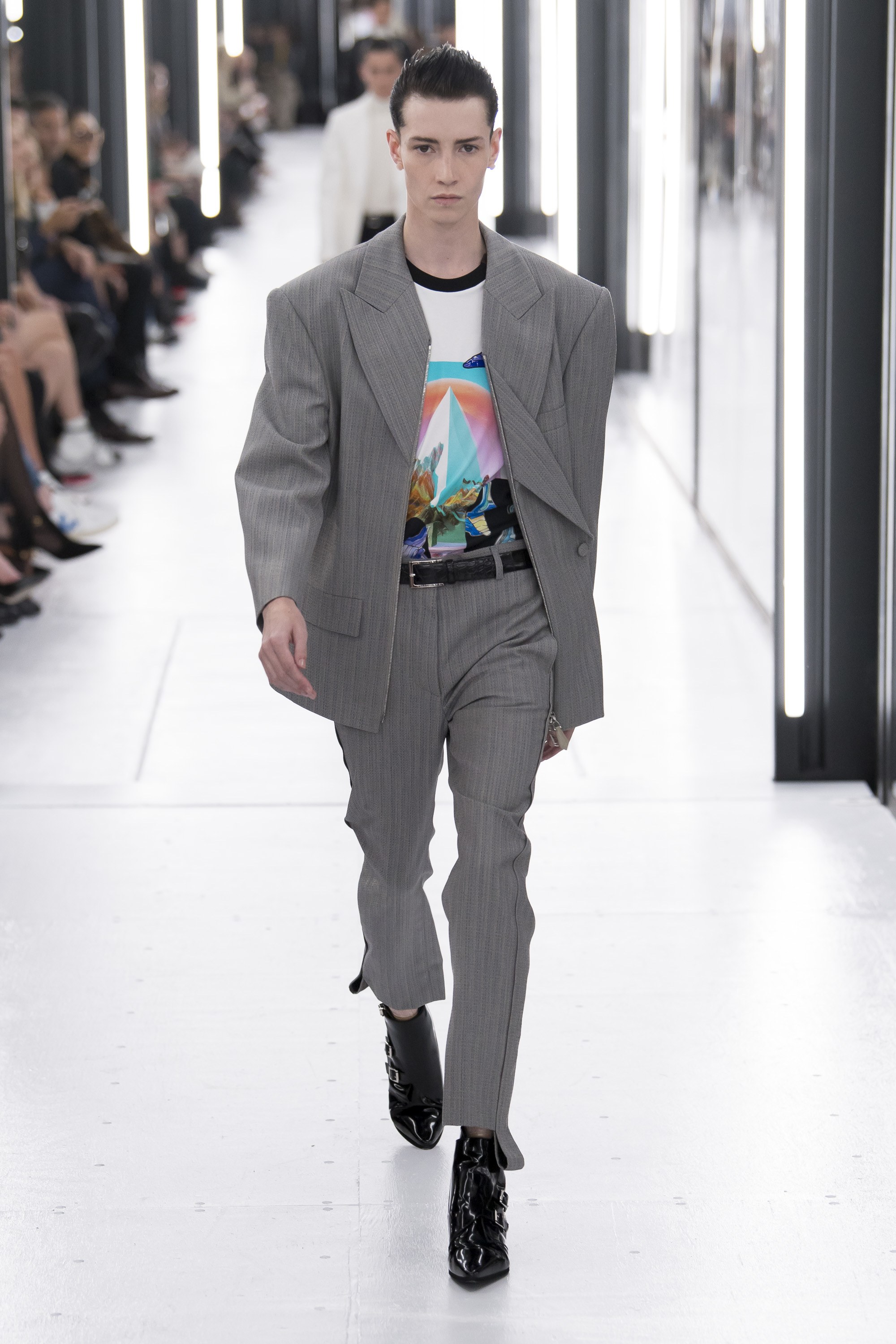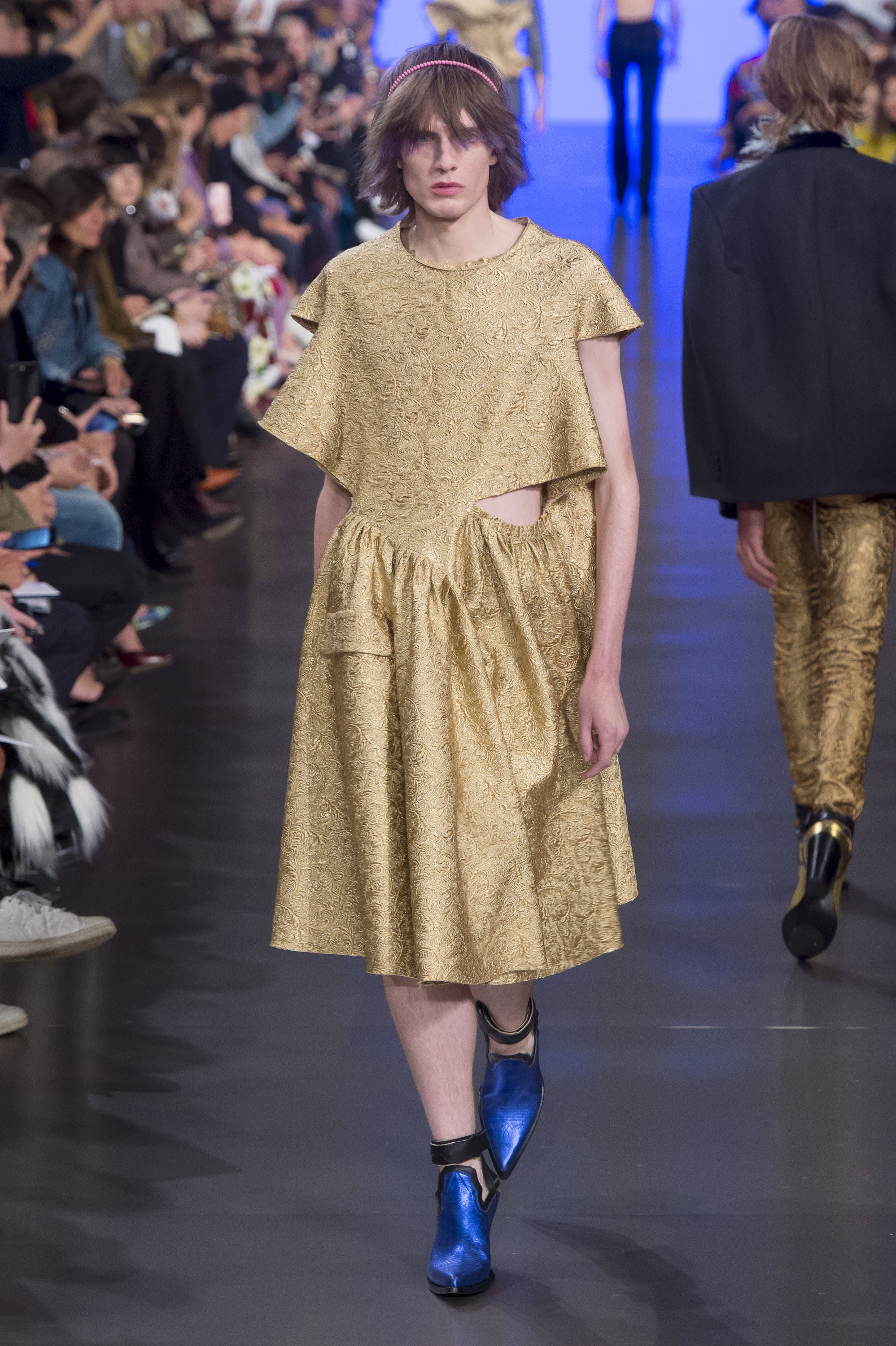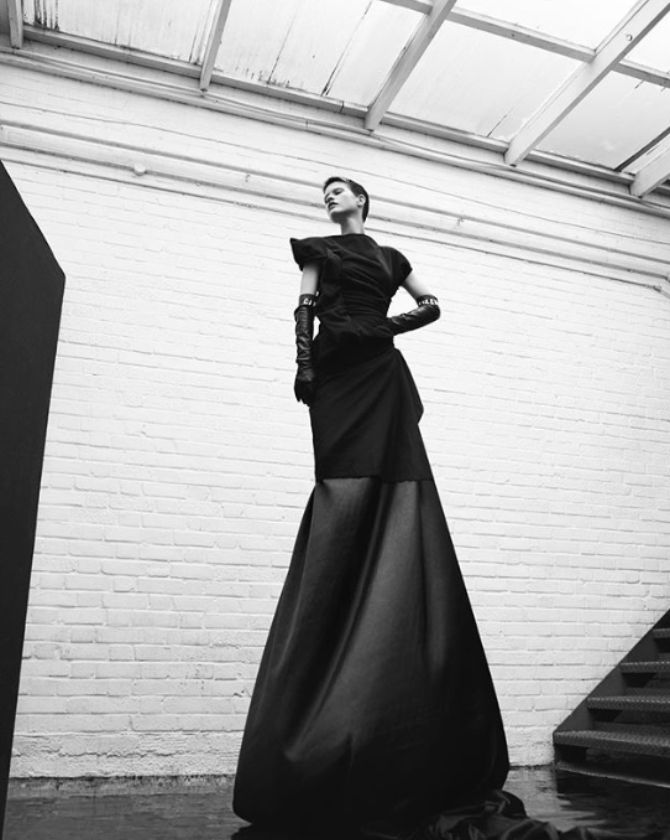It has been more than 30 years since Jean Paul Gaultier first unveiled his monumental collection entitled “When God created Man” featuring big, brawny men in exceptionally tailored skirts. What was first interpreted as a severe provocation to the status quo, Gaultier helped revive the already established masculine legacy of the garment - which was worn by macho-men throughout history, from the Ancient Egyptians and Romans to the samurais and the Scots - for a post-modern era. Our connotation of the “man skirt” has shifted throughout history from ultra-masculine to ultra-feminine and is only one example how neither garments nor fabrics posses gender; gender codes are in the eye of the beholder.Symbolism and gender identities are constructed by temporal and spacial context, dependent on society and collective culture. Hence, clothing in itself is not gendered - our society is, where we collectively mould boundaries and artificial limitations onto the codes of fashion. Pink is not inherently feminine, neither are ruffles and lace - they are simply embellishments and neutral.
It is worth remembering it is us - the consumer- who defines fashion codes, not fashion which defines us.While Vivienne Westwood, Giorgio Armani, John Galliano, Rei Kawakubo, Yohji Yamamoto, Kenzo, and Marc Jacobs have consistently promoted a gender fluid vocabulary, the shift towards non-gendered fashion has become even more commonplace throughout today’s global fashion industry, catapulted to the mainstream conversation due to an Instawoke generation. As a consequence, institutions such as the CFDA have newly added the “unisex/non-binary” category to New York Fashion Week earlier this year, while half of the recognised designers at this year’s LVMH Prize shortlist exhibited gender-neutral collections including Ludovic de Saint Sernin and Charles Jeffrey. Delphine Arnault, founder of the Prize and leading talent at LVMH stated that “gender-neutral fashion, already present in former editions, has gained considerable ground, thus proving that the Prize echoes the recent evolutions in fashion.”
Equally, the Spring 2019 collections solidified the industry’s acceptance for gender-neutral fashion. Notably, Nicolas Ghesquière of Louis Vuitton offered a piercing presentation of exaggerated androgynous silhouettes and sci-fi prints. His futuristic vision of genderless fashion coincides with other creatives when imagining the (both utopian and dystopian) future. Think only of The Matrix which features super sleek sunglasses and floor skimming leather coats; the distressed blue coveralls of 1984; the rigid, metallic jumpsuits featured in countless sci-fi blockbusters worn by protagonists exploring the depths of galaxies far, far away. When lookingahead, futuristic fashion is arguably defined by utilitarianism, leaving distinctive gender codes behind.Another buzz worthy gender fluid Spring 2019 collection was Celine - sans è- reimagined by Hedi Slimane who added menswear to the roster through sharp New Wave tailoring. Slimane’s first press release for the brand stated “The entire wardrobe worn by the male models is unisex, and therefore will also be available for women.” Additionally, creative director John Galliano of Maison Margiela exhibited a gender bending collection dubbed “Co-ed” where deconstructed garments were worn by both men and women. Women wore zoot suits, while men donned skirts and dresses.
While visually stimulating, the collection provoked the question of why is it that when a woman dresses like a man, wearing a tailored, sharp suit she is perceived as powerful whereas, as seen here at Margiela, if a man wears a dress he looks as if he is wearing an attention grabbing costume? Despite all of the progress made in society regarding gender equality, a woman adopting male coded garments is accepted; a man adopting female coded garments is rejected and ridiculed.The most compelling brands offering gender fluid fashion steer away from gimmicky theatrics and instead stay true to a powerful well defined aesthetic. They radiate an authentic message which intellectually goes beyond gender constructs. One poignant example of successful gender fluid design is Louis Gabriel Nouchi, a graduate of the Ecole des Arts Visuals de la Cambre and winner of the Camper and Palais de Tokyo Prizes at the Hyères Festival 2014. With a predominant focus on knitwear and jersey, Nouchi offers a contemporary take on cut and silhouette merging crisp tailoring and leisure sportswear defined by function and craft. Through a refined lens on youth infused grunge, the brand disregards gender norms and lends male and female consumers the freedom to wear what they wish.
While I argue, there is still a purpose and beauty in traditional codes of men's and womenswear, embracing the tide of unisex fashion gives the consumer ultimately more choice over their identity and what they wish to communicate. The consumer holds the power to craft their own image, and holds the power to reject or accept design suggestions. Additionally, unisex fashion makes business sense by linking men’s and women’s shows together, thus offering a singularity in vision. However what does this mean for brands such as Louis Vuitton who have both a high profile men's (Virgil Abloh) and women's (Nicolas Ghesquière) wear designer? Will we see increased consolidation? Surely creative and managerial strategies will need to adapt. If the future of fashion is regarded as unisex, the future is indeed now.




